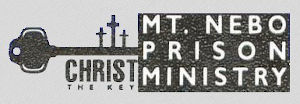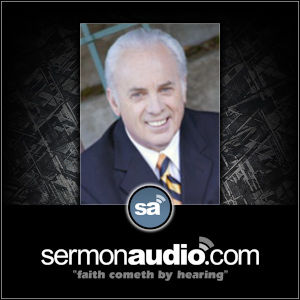Why Meet in Homes?
Everyone would expect a new church to begin by meeting in a home. A group consisting of only ten or twenty people would not need a larger meeting place, and the costs involved in buying or renting any sort of building would be prohibitive. So when we were a new church, and when we said that we were meeting in homes, most of our friends in other churches understood. But when they learned that it was our intention to continue meeting in homes no matter how large we got, curious eyebrows often began to raise.
The idea of the house church does not easily fit into the paradigm of American evangelicalism. For hundreds of years now, the idea of the church has been almost universally associated with a central meeting place—a church building. Even though the biblically informed Christian knows that the church is people, not a building, it remains almost impossible for some to escape the association between a particular local church and the building in which that church gathers.
We understand that when a society has grown up with an idea—a tradition that has been passed down from generation to generation—a departure from that tradition can seem strange or even wrong. We do not fault those who question our practice, or those who are not convinced of its benefits, nor do we condemn the longstanding tradition of churches meeting in large central buildings. Too many examples of excellence within that tradition, both historically and currently, could be brought forth in its defense. Our intent is simply to offer several reasons why we want to continue meeting in homes, and to demonstrate that our practice is valid and biblically sound.
The First Christians Met in Homes
Both the New Testament and the annals of church history inform us that the earliest Christians felt no need to construct special buildings for their gatherings. No church building, as such, can be identified until at least the end of the second century, and the grand, ornate structures that marked the middle ages did not become the norm until the fourth century—the time of the Roman emperor Constantine. The first Christians met wherever they could, the most popular setting clearly being private homes. Please take the time to read a few of the most obvious references to the use of homes in the New Testament:
“So continuing daily with one accord in the temple, and breaking bread from house to house, they ate their food with gladness and simplicity of heart.” Acts 2:46
“And daily in the temple, and in every house, they did not cease teaching and preaching Jesus as the Christ.” Acts 5:42
“. . . he came to the house of Mary . . . where many were gathered together praying.” Acts 12:12
“Likewise greet the church that is in their house.” Romans 16:5
“Aquila and Priscilla greet you heartily in the Lord, with the church that is in their house.” 1 Corinthians 16:19
“Greet the brethren who are in Laodicea, and Nymphas, and the church that is in his house.” Colossians 4:15
“To Philemon our beloved friend . . . and to the church in your house.” Philemon 1-2
Other examples could be given, but even these few seem to establish a clear pattern. In fact, we believe a convincing case can be made for the claim that every local church mentioned in the New Testament met in a home.
In the Old Testament, the Israelites were first told to erect a moveable tabernacle (Exodus 25:8), then a fixed stone temple (2 Samuel 7:13) to serve as their center of worship. But that entire system of worship, including the building that was its center, was utterly destroyed in 70 AD (cf. Matthew 24:1-2; Luke 19:41-44). While the Jews remained building-oriented even after the destruction of the temple, continuing to construct synagogues all over the known world, the early Christians did not follow their pattern.
Following Pentecost and prior to 70 AD, Peter, John, and others continued to use the temple as a context for evangelism (Acts 2:46; 5:26; 5:42). Paul regularly made use of the various synagogues in the same way (cf. Acts 13:14; 17:10; 18:4,19,26; 19:8, etc.). But the evidence is overwhelming that it was the home where the early Christians gathered for mutual edification, prayer, and worship. God was creating something new—something more primitive, less formal, less ceremonial, and less burdensome than the formerly established structure and practice.
These facts do not constitute a mandate for Christians to worship exclusively in homes, but they do establish solid precedent. Certainly every group of Christians is free to worship in whatever setting they choose. But it is hard to imagine improving upon the model God used for the birth of His church and the spread of the gospel to all the known world (Acts 17:6; 24:5; Colossians 1:5-6).
A Natural Setting for Fellowship
During our meetings, we enjoy facing one another in a warm, familiar environment, rather than sitting in rows looking at the back of someone’s head while most of the activity takes place up on a stage. We also enjoy eating a meal together every week, sampling our friends’ cooking, or sometimes bringing in pizza. We enjoy drinking coffee or tea after our meetings while we sit comfortably around the living room, sharing in each other’s lives. We often stay rather late, discussing personal or church matters and doctrinal issues. Sometimes, advice or counsel is sought by one, and given in return by another, or even several. Sometimes, two or three will find a quiet place to pray together. All in all, it is like the most wonderful sort of family reunion—and we get to have one every week.
This kind of fellowship certainly can take place in a sanctuary setting. But in the home it is natural—it is built in—it is virtually guaranteed! And think of this: Even as we grow large in numbers, we will never lose the familiarity and intimacy that we have experienced in our beginnings! Instead, we will be forming new congregations—teaching others how to experience this same kind of rich Christian fellowship.
A Wise Use of Resources
How much money does the typical church set aside for building expenses? The figures would range from modest to astronomical. And what happens when even a smaller traditional church—one with only a modest budget for building costs—grows too large for its current facilities? Usually the solution is to buy or build something new and bigger. The point is, for the sanctuary-style church, buildings cost money to own and maintain, and increased membership almost always means increased building expenses.
We have chosen instead to use an existing resource for our gatherings—one that need not be bought, built, or expanded when growth occurs. As the needs arise, we will simply expand to other existing homes. Instead of spending money on buildings, we are able to direct more of our resources toward the support of the poor (Acts 2:44-45; 11:29-30; 2 Corinthians 9:6-9), support of missionary efforts (Philippians 4:15-19), and support of elders (1 Timothy 5:17-18). There are other costs involved in our gatherings, but they are minimal when compared to the expenses necessary for the maintenance, and particularly the growth, of a traditional church.
A Well-tended Flock
Pastors have the God-given responsibility to diligently feed, guard, and care for whatever flock has been entrusted to them (Acts 20:28; 1 Peter 5:2-3). They are also informed that they will one day give an account of their care to the Chief Shepherd (Hebrews 13:17; James 3:1; 1 Peter 5:4). Any pastor who takes this responsibility and accountability seriously should shudder at the thought of giving an account for two hundred, let alone two thousand or more.
Our home congregations are led individually by men who are biblically qualified as elders (or pastors—the terms are interchangeable). This means that each elder is responsible for the care of as few as ten or fifteen, and as many as twenty-five or thirty people. In some cases, where an elder can dedicate sufficient time to two congregations, the number might be as high as fifty. And as the Lord provides, home congregations will have more than one elder, thus enhancing the care for the members. By having multiple home congregations with multiple elders, we will be establishing an extremely broad leadership base. All of this will result in a well-tended flock.
A Proven Pattern for Expansion
Consider again the rapid growth of the early church. Between Pentecost and 70 AD the church experienced the most phenomenal growth in its history, spreading from a mere handful of believers in Judea, all throughout the Mediterranean world—even as far as Ethiopia and Spain! And most scholars agree that all of this was accomplished using private homes as the primary meeting place. So what kind of “church growth plan” did the early church use? Consider the following theoretical mathematical potential for a ministry such as ours—one that is undoubtedly similar to the pattern revealed in the growth of the early church.
Beginning with a single home congregation with an ongoing average membership of only twelve people, allow for that group to reproduce itself in the form of a second group after eighteen months. Then allow for each of those groups to reproduce during the next eighteen months—and so on. Allowing for growth and loss within each group, but maintaining the yearly group average of only twelve members (a very conservative estimate of group size), after 6 years, the church would have 192 members. After 12 years, it would be approaching mega-church range with 3,072 members. After 15 years, it would definitely be a creating a stir among church-growth analysts with 12,288 members. After 18 years, the numbers would be getting ridiculous with 49,152 members. And after 21 years, the overall membership of the church would be 196,608!
Please don’t misunderstand—we hold no illusion that Christ Fellowship will ever boast a membership of nearly 200,000 people. We simply offer these calculations as a way of showing that our philosophy of expansion has potential equal to, if not greater than any other.
The Design for New Testament Instructions
The New Testament is filled with instructions for the life and health of the church. It takes no profound reasoning to conclude that when the New Testament authors gave written instructions to the church, they were writing in light of what they knew the church to be—small assemblies meeting in homes. Now think about this: If the church were later transformed into something that had never been seen or anticipated by the authors of the New Testament, the instructions they gave to the early church might not be as readily applicable to the new form.
As an example, consider this principle in light of all of the “one anothers” in the New Testament—the commands to know, love, guard, and care for our brothers and sisters in Christ (i. e. John 13:34-35; Romans 12:10; Galatians 6:1,10; Colossians 3:12-16; 1 John 3:16-17). Certainly these are faithfully kept in many larger assemblies, but it seems impossible to overlook the fact that increased size usually means increased difficulty in keeping them consistently—the increased potential that at least some will fall through the cracks. And it also seems evident that in order to keep these commands to love and care for one another, larger bodies need added structures and programs which in turn necessitate additional burdens of administration.
We could multiply examples. But suffice it to say that in at least this one case, the instructions are much easier to follow consistently in a smaller gathering. We would even suggest that these instructions were designed for small gatherings.
Summary
Why do we meet in homes?
The First Christians Met in Homes: The New Testament and early church history affirm that homes were the predominant setting for the gatherings of the church.
A Natural Setting for Fellowship: We enjoy the home environment in that we find it to promote excellent Christian fellowship and mutual edification.
A Wise Use of Resources: The best ways to use our financial resources are for benevolence, missions, and elder support, rather than building expenses.
A Well-tended Flock: The church will be healthier when elders are not overburdened by an unmanageable number of people entrusted to them.
A Proven Pattern for Expansion: The multiplication of home congregations can facilitate expansion while at the same time maintaining an ideal setting for fellowship.
The Design for New Testament Instructions: We believe the instructions given to the church were designed for, and can be most consistently followed, in small assemblies.
SOURCE: http://www.christfellowshipkc.org/mtg_home_why.asp




















Leave a Reply
You must be logged in to post a comment.